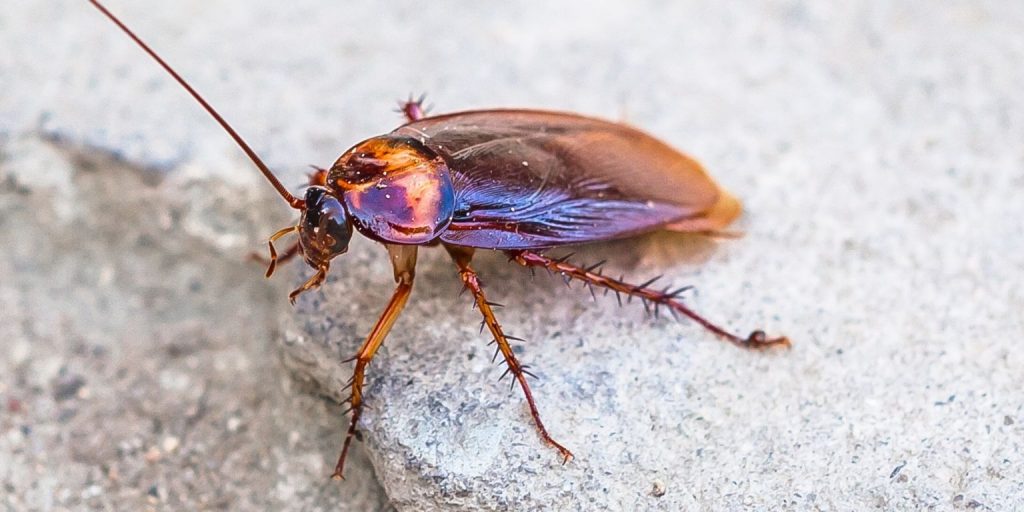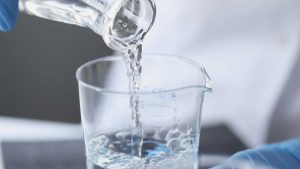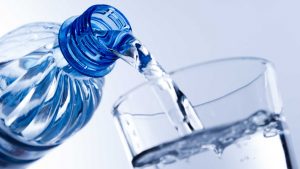Boric acid is often used as an insecticide and can be very effective at controlling cockroaches, as well as small ants. However, in humans, boric acid is only slightly more toxic than table salt.
How Is Boric Acid Able to Kill Cockroaches?
So, how is boric acid able to kill cockroaches, when it is only slightly more toxic than table salt? The short answer is that boric acid affects the body of an insect much differently than it does a human or other mammal.
This does not mean that boric acid is safe for humans or animals to consume though, but only that it takes less boric acid to kill insects.
When considering the comparison of boric acid to table salt, it is important to remember that many of the things we regularly eat are actually toxic if consumed in excess. For example, caffeine is almost 14 times more toxic to humans than boric acid.
More information about boric acid is below, including how to save money by making your own homemade ant traps.
What Is Boric Acid?
Boric Acid is often used to kill insects and has many other industrial uses. It is a weak acid that often comes in an odorless colorless powder, which can be dissolved in water.
Boric acid was first discovered over 400 years ago by Wilhelm Homberg, who was able to extract boric acid from a type of salt called borax. Today, borax has many uses and is often used in laundry detergents.
Toxicity of Boric Acid
It is often stated that boric acid has the same toxicity as ordinary table salt in humans, which can be a little misleading. To understand what this means, it is important to understand a little bit about toxicology.
In the medical field an objects toxicity is usually described as an LD50 value. The LD50 is the Lethal Dose required to kill 50% of those who are exposed to it. Typically rats are used to calculate an LD50 value.
Boric Acid has a LD50 value of 2,660 mg/kg. This means that in about half of those who weigh 80kg(176 lbs,) 212gm(.49lbs) of boric acid would be a lethal dose.
Table Salt has a LD50 value of 3000 mg/kg. This means that in about half of those who weigh 80kg (176lbs,) 240 grams (.52lbs) of table salt would be a lethal dose.
Using Boric Acid as an Insecticide
Boric acid can be very effective at controlling cockroaches, sugar ants, and other household insects. If you goto most hardware stores, you will notice that many common insecticides list boric acid as the main ingredient.
So, Why Does Boric Acid Work on Insects?
In insects, boric acid affects the body differently, making it a very effective insecticide. Boric Acid was first registered as an insecticide in the US in 1948, but had been used prior to this for some time.
When an insect consumes boric acid, it poisons the stomach and affects the insects metabolism. The powder is also abrasive, further affecting the exoskeleton of the insect.
One of the reasons boric acid is so effective at controlling ants, especially sugar ants and other common household bugs, is that a poisoned insect brings the poison back to their nest, where it spreads to the other insects.
So, Does that Mean Boric Acid Is Safe for Humans and Animals?
No, boric acid can still be very dangerous to humans, animals, and children. It may requires a lot of it for a lethal dose, but there are also several side effects of exposure to boric acid.
Many of the insecticides that contain boric acid will contain a sweetener, such as sugar, to attract insects. These should be stored and used well away from areas where children or pets will be exposed to.
Other Uses of Boric Acid
Aside from controlling insects, boric acid has many other uses.
Boric Acid is often used in the medical industry as an antiseptic, on wounds, and as an eye-wash. It is also used to preserve wood, in nuclear plants to help control fission, and as a lubrication. Boric Acid was also originally one of the main ingredients of silly putty.





